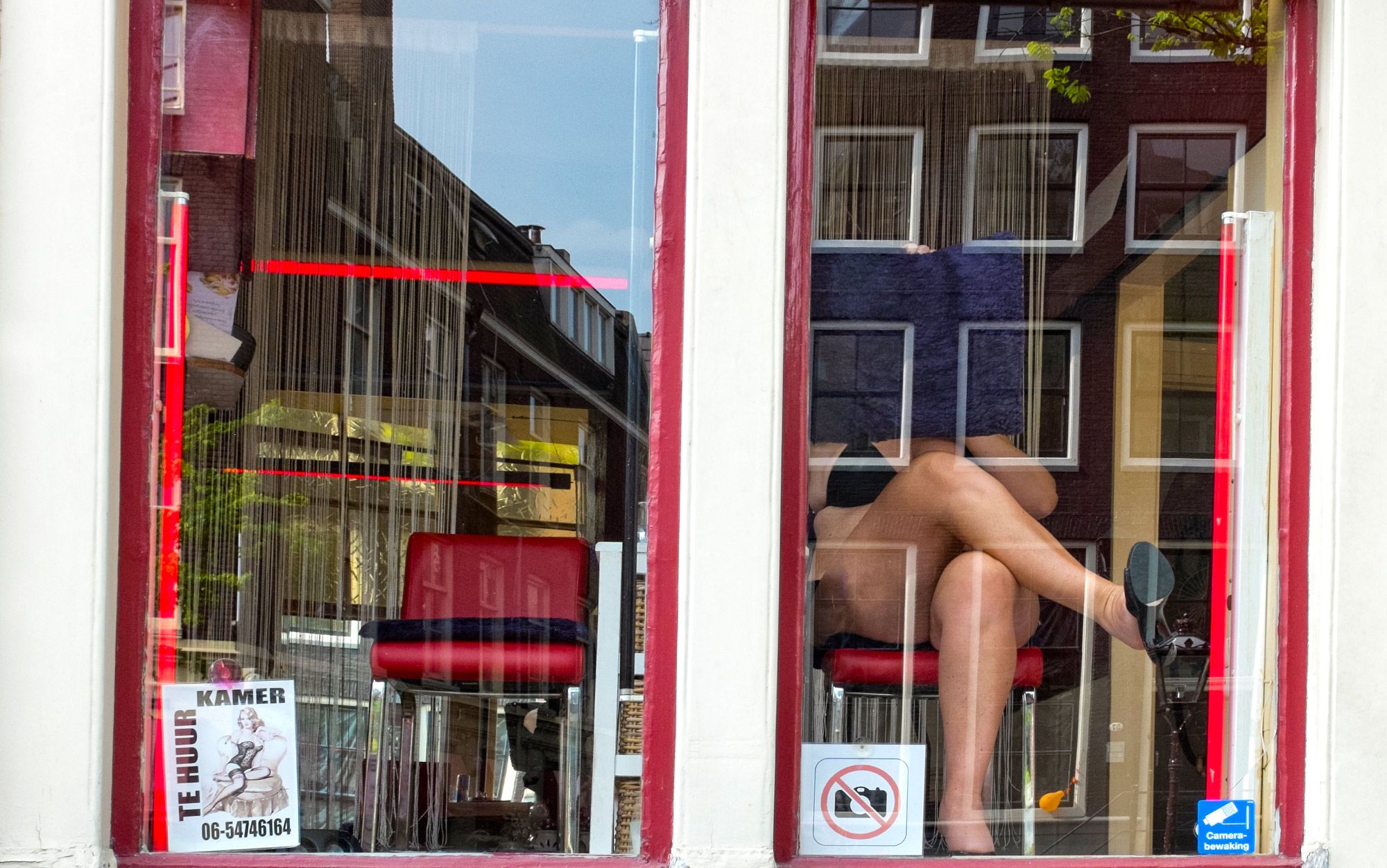Almost every small town in Brazil — especially those in the interior state of Minas Gerais — has its town eccentric, that person the whole town knows, takes care of, and looks after like a sort of patrimony. Ibiá, where I was born, had Zé Tem Dó. With him, I learned about the symbolic value of certain objects. I was about 4 or 5 years old. My mother was a seamstress and Zé collected spools of thread. His visits to my house were constant, because my mother saved all her empty spools for him and always offered him something more like a drink, clothes, or a plate of food.
Once when I thought that Zé was distracted, I tried to grab one of his spools. He jumped up and in two swift steps was right in front of me, protecting the precious goods that to my mother were just scraps. I ran off in the other direction, startled and afraid. Zé gathered his things and went on, conversing with one of the spools that he tied to the tip of a piece of thread and dragged along with him. It was his pet or his little cart, something that went far beyond what I was or ever will be able to see, unless one day I become a Zé and become the folkloric figure of a small rural town. But there, in that moment, I learned something that I will write about here: Zé was not playing with a spool and we are not playing with a head wrap.

Thauane Cordeiro posted on Facebook this image of herself using a head wrap on Feb. 4. Since then, an intense debate has ensued and her photo has received more than 138,000 reactions.
Photo: Facebook
Last week, in Brazil, a young white woman published a message on her Facebook page, explaining that, while using an African-style head wrap because of her cancer treatment, she was approached by a black woman and questioned about her choice. Young black activists say that, based on conversations within their various movements, it is unlikely one of them would make such a comment. This specific case was quickly generalized and the controversy spread through Brazilian news and social media, with attacks and attempts to delegitimize the historic struggle of the black movements.
We are signs created by white people so that our blackness can be commercialized.
Much of the white Brazilian population knows its European origins and cultivates, with pride and care, the Italian last name, the recipe book from a Portuguese great-grandmother, the menorah that has been in the family for many generations. Those with resources travel, at least once in their lives, to visit the place where their ancestors came from and to meet the family members who are still there. But what about the descendants of the African diaspora? When they arrived in Brazil, the traffickers had already destroyed registries of the places they were from and redefined ethnicities with generic names like Mina for all the people who embarked from the costa da Mina, or Gold Coast of West Africa. They had already made them go round and round the Tree of Forgetting (a ritual that was believed to clear their memories and history) or through the Door of No Return, so that they would never want to go back and had already separated them into lots that were more valuable if they were diversified, so that they could not understand one another.
While still on African soil, they were subjected to Catholic baptism, so that they were no longer pagan and acquired a soul through a “civilizing” religion, receiving a “Christian” name that was joined, once on Brazilian soil, to the last name of the family that acquired them. In Brazil, they could not speak their own languages, manifest their beliefs or make decisions about their own bodies and destinies. So that anything at all could be preserved, there were centuries of fighting, lost lives, beatings, torture, humiliations, and confrontations in the name of the thousands that arrived here and also for those who were left along the way.

Protestors on the streets of São Paulo to advocate for the rights of Brazil’s black community during the 13th annual Black Consciousness March.
Photo: Rovena Rosa/Agência Brasil
As a result of this, we are who we are: Beings without a defined belonging, without easily traceable roots, who are no longer from there and were never fully planted here. We have our “belonging lodged in a metaphor,” as the Canadian poet, romanticist, essayist, and documentarian Dionne Brand says in her marvelous “A Map to the Door of No Return.” To live in the black diaspora, according to her, is “to live as a fiction — a creation of the empires, and also self-creation. It is to be a being living inside and outside of herself. It is to apprehend the sign one makes yet to be unable to escape it.”
We are signs made by white people so that our blackness can be commercialized. And we cannot escape from this because without even listening to us, you always already seem to know what we are, what we want, what we know. Blackness, social movements, black women, “those people” — never individuals, always in lots. And we live in a metaphor that from this point forward I am going to call a head wrap, but it could be any other symbol.
The collective head wrap that we inhabit was constantly racialized, disrespected, invaded.
Wearing a head wrap is a form of belonging. It is joining with another member of the diaspora who also wears in a head wrap and, without needing to say anything, know that he or she knows that you know that the head wraps on our heads cost and continue to cost our lives. To know that our precarious housing was once considered illegal, immoral, abject. In order to carry this head wrap on our heads we had to hide, pilfer, disguise, and deny it. It was cover, but it was also a symbol of faith, of resistance, of union. The collective head wrap that we inhabit was constantly racialized, disrespected, invaded, made profane, and criminalized. Where were you when all of this was happening? You who now want to kick down the door and take a seat on the living room sofa, just as we have almost been able to restore the dignity of our head wraps. Where are you when we need help and humanity to preserve these symbols?
I remember seeing a sign at the recent Women’s March that asked, “I’ll see you nice white ladies at the next #BlackLivesMatter march, right?”
You nice white ladies who want to wrap yourselves in our head wraps, you will be with us when we weep over the deaths of young black boys and cry out for justice, right? You will use head wraps when our Afro-Brazilian religious leaders (mães e pais de santo) are kicked out of their communities and held down on top of ant hills by police, right? When we complain of pain because we received less anesthesia than white women while giving birth? When we denounce that we suffer more violence, more abuse, and more assault than you? When we demand to receive the same pay as you? You will echo our voices when we say that we have been rejected by men (white or black), and you will understand and have comforting words for us when we feel guilty for leaving our own children at home in order to care for yours, and you will listen to us and defend us at the top of your lungs when someone else is trying to invade our head wraps by force. Right? Because then the head wrap will be yours. You will listen, understand, and speak with us when we try to explain that our (distorted) claims of appropriation have nothing to do with pizza, jeans, and feng shui, right?

Black Women’s March Against Racism in Brasília, the nation’s capital, in front of Congress on Nov. 18, 2015. During the protest, police fired pepper spray and live ammunition.
Photo: Lula Marques/Agência PT
When you say “I am going to use it, period, I want to see who is going to stop me,” sometimes I feel like sitting you on my lap, just as the “black mothers” that probably played a role in many of your lives, or in the lives of your ancestors used to do, and say that this is not the way good children behave. And say that, yes, some things are yours, because they came from your great-grandmother, from your grandmother, from your mother. We too can have some things that are ours, that we inherited from our family.
Take a look: Pizza! (“It’s Italian food!”). Acarajé, from the Iorubá words akara (a fried rice cake) and ijé (food) — (“IT’S MINE! It’s from Brazil! It’s everybody’s!”). Hashu’al (“It’s Israeli!”). Congado (“IT’S MINE! It’s from Brazil! It’s everybody’s!”) Kimono! (“It’s Japanese!”) Ojá! (“IT’S MINE! It’s from Brazil! It’s everybody’s”!) Kung Fu (“It’s Chinese!). Capoeira! from the Tupi word ko´pwera or the Umbando kapwila (“IT’S MINE! It’s from Brazil! It’s everybody’s!). Abajur, the word for lamp in Portuguese (“Comes from French!”), Moleque, quiabo, berimbau, samba cafuné, zumbi … and an endless list of other Afro-Brazilian words, concepts and cultural manifestations (“IT’S MINE! It’s from Brazil! It’s everybody’s!”).
We got tired of being characters in the jokes that are funny only to you.
And then we are the ones called segregationist, egotistical, without culture, while other groups can keep, without controversy and without being forced to share (“IT’S MINE! It’s from Brazil! It’s everybody’s!”), the “contributions” that their people brought to Brazilian soil. We understand that you think it is (and always has been) all yours. But we got tired of staying in the kitchens, the back rooms, the halls, the pool decks, without being included in what you call “Brazilian people.” We’re tired of hearing that we don’t know, don’t see, don’t understand, don’t want, can’t — of having to ask permission for everything, of having to say we are sorry even when we were the ones who were offended. We’re tired of serving people who don’t know our names. We’re tired of being characters in jokes that are funny only to you.
Our discussions and our intellectual production, which are carried out under our head wraps, are delegitimated by the call to order #WhitesWillUseHeadWraps! (#VaiTerBrancaDeTurbatneSim!), yelled at us with the same arrogance and expectations of obedience that the owners of our ancestors yelled #WeWon’tHaveBlackThingsHere! (#NãoVaiTerCoisaDePretoAquiNão!) Many things happen in our head wraps that you have no idea about: We have to build support networks — which are invisible to you and distant from your privileged existence — to help, console, orient, and strengthen the victims of racism committed by people who, offended when we show where they are lacking, become victims themselves.
Under this head wrap we teach young black children not to take bananas to school for lunch because the other kids will call them monkeys. We tell our children not to use clothes with hoods, not to run, not to make harsh movements in public and not to look suspicious, whatever that means to you. Protected by these head wraps, we share information, discuss theories, we communicate with foreign head wraps and even raise money to pay for the funerals of young people who have been assassinated by the police. We agree, disagree, laugh, cry, tell secrets, shout, love, hate, study, tell one another that we have to have infinite patience to go back five, ten, twenty steps from our point of understanding to be able to respond to egocentric comments like “I read Monteiro Lobato and I didn’t become racist,” or “If I use a head wrap, will I be called racist?” Because we know that they are not innocent comments or questions, they are also metaphors. They are the walls that protect the places where you reside, where we are not admitted, because on the door there has always been a sign that says “whites only.”
You always have another place to go, the place of whiteness.
The head wrap we wear is not the same as yours. What for you is the simple desire to be cool, to project yourself as a free being without prejudice, for us is a place of connection. Connection among us and also with something that we lost, not always knowing exactly what it is or where it was left behind. Wearing our head wraps has the same meaning for us as “going to the villa where my Italian grandparents were born,” or “I could really feel what my great-grandparents went through in that concentration camp.” Yes, because among many others, the head wrap has these two meanings: comfort and pain.
We don’t make fun of you when you defend these places that are part of the history of your people. We do not make jokes about the meanings that these places have for you. We do not say that they are merely constructions of rocks and bricks piled one on top of the other. We do not call them stupid because our ignorance does not let us understand what you all say about these places that are dear to you, because they carry the markings of your great-grandparents, grandparents, parents and will continue to mark the lives of your children, grandchildren and great-grandchildren. And, nevertheless, we have to observe in silence, under the threat of being silenced by force, like the ravenous beasts that you think that we are — it’s not action, it’s reaction! — you kicked down our doors, invaded our head wraps with shouts of #WhitesWillUseHeadWraps!
For you the head wrap is temporary housing, the kind that you may come and go from as you please and as style dictates, because you always have another place to go, which is the place of whiteness. We don’t have that, because our existence is embedded in our skin, our home is fixed on our back, just like the snail’s. Our home, for you, is fetish, is exoticism, is accessory, is costume. Our home.

Demonstrator wearing a head wrap at the Black Women’s March Against Racism in Brasília on Nov. 18, 2015.
Photo: Marcello Casal Jr./Agência Brasil
In our home, we aren’t talking about head wraps when we talk about head wraps. Among its many names, the first is racism. It is racism when you think we do not know what you are talking about. It is racism when you deduce that you need to teach us that pizza is Italian, that the cotton used to make the fabric of the head wrap is Indian, that in a globalized world, etc., etc., etc. We have to go back five, ten steps in the discussion that you are not accompanying because you don’t want to — but you still think you are qualified to offer your opinion — so that we can level your understanding, in order to say: It’s the racism, stupid! And before that we have to go back thirty steps to hear “I am not racist!”: It’s the system, stupid! And because it is structural, it structures Brazilian society, which means that you work to maintain it whether you want to or not, whether you know it or not.
We can talk about cultural appropriation after you have read this article by the philosopher Djamila Ribeiro, which was published long before your fight for the right to wear the head wraps came into fashion. Or the poem by the master Nei Lopes, which can be read below. In this case, you can be sure that when you come with the corn flour fubá (from the Quimbundo word fuba or the Quicongo mfuba), we are already eating angú (a dish made with fubá and whose name comes from the Fon àgun).
BRECHTIANA (for Abdias Nascimento)
First,
They usurped math
Medicine, architecture
Philosophy, religiosity, art
Saying they had created them
In their own image and likeness.
Next,
They separated the pharaohs and pyramids
From the African context
Because Africans would not be capable
Of such invention and advancement
Not yet satisfied, they said
That our ancestors had come from far away
From a strange Asia
To invade Africa
To push out the natives
Bosquimanos and hotentotes.
And wrote History in their own way.
Calling the nations “tribes”
Kings “regals”
Languages “dialects”.
Then,
Then they blamed slavery
On the ambition of its own victims
And put racism
On our tab.
So,
They reserved for us
The most sordid places
The most degrading occupations
The dirtiest roles
And they said:
“Laugh! Dance! Make music!
Sing! Run! Play!”
And we laughed, danced and made music
We sang, ran and played
Now, enough!
— Nei Lopes
Translation by Courtney Crumpler.
The post White Brazilians Don’t Want to Accept Their Racism In Controversy Over African Head Wraps appeared first on The Intercept.












 To the Editors: In his review of my book, Charlie Savage challenges my assertion that Edward Snowden did not check in to the Mira Hotel in Hong Kong until June 1, 2013.
To the Editors: In his review of my book, Charlie Savage challenges my assertion that Edward Snowden did not check in to the Mira Hotel in Hong Kong until June 1, 2013.














